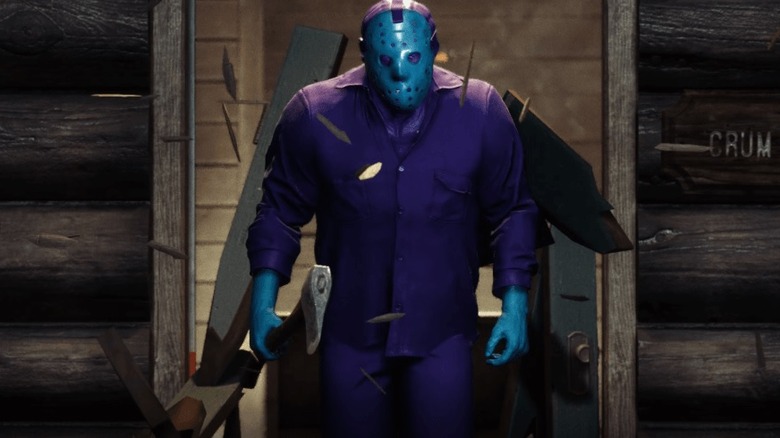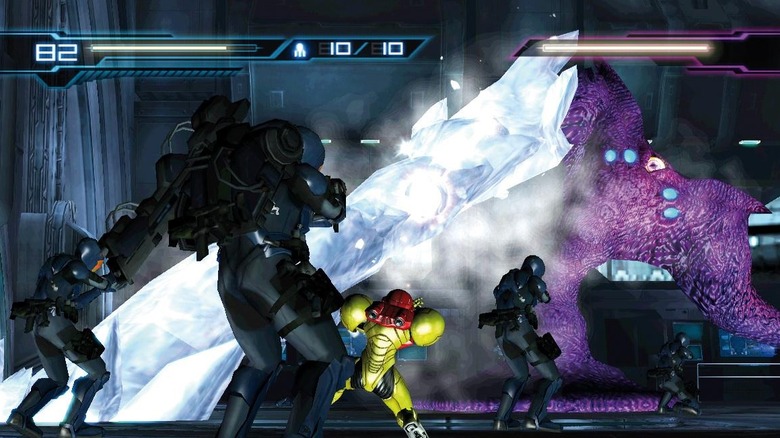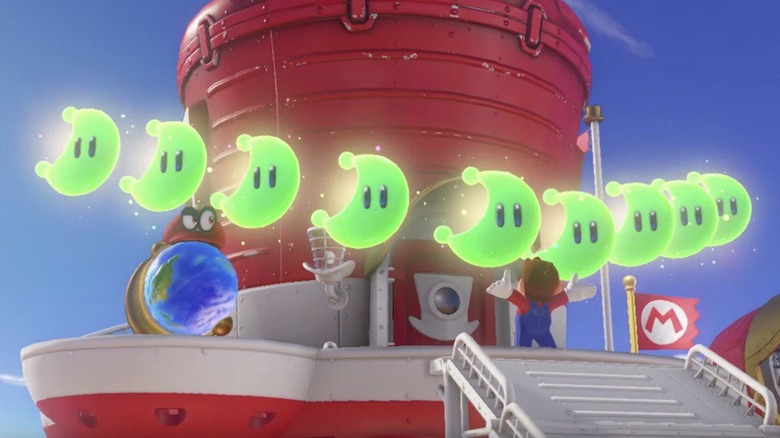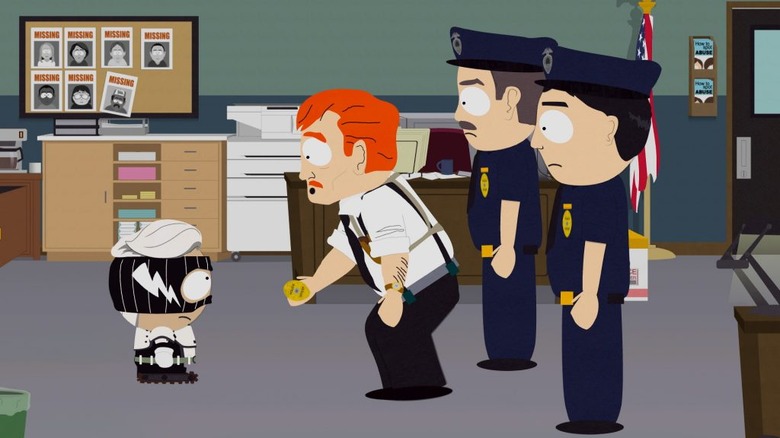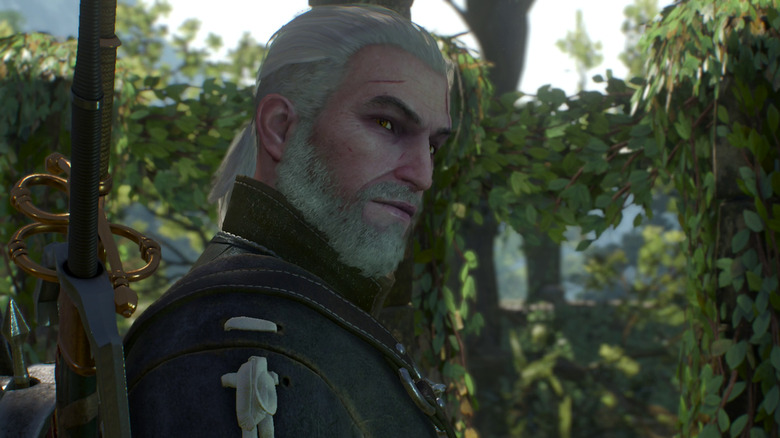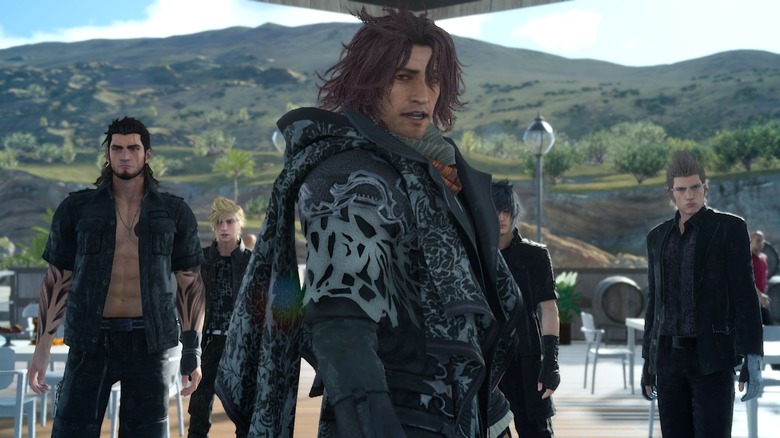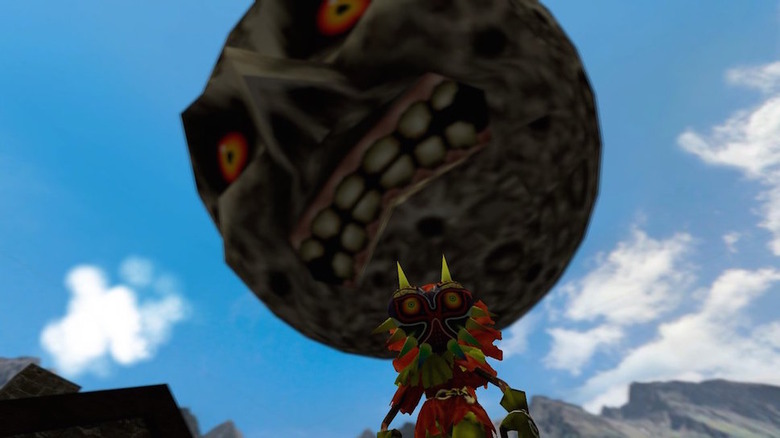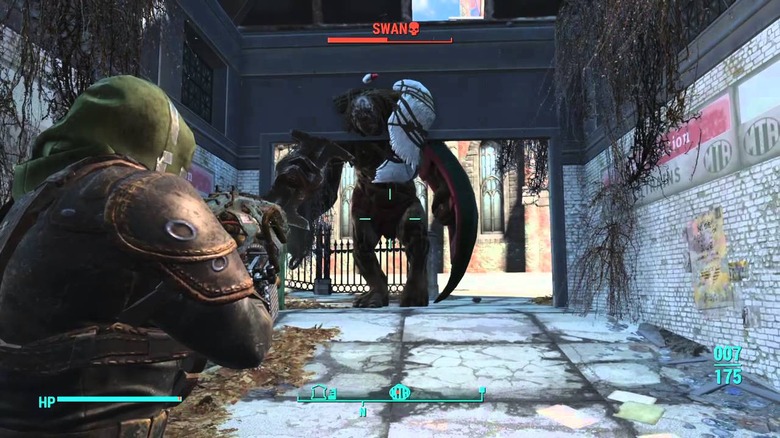The Real Reasons Video Games Are Easier Today
Once upon a time, it was easier to earn a doctorate in nuclear rocket surgery than become a video game master. That's because many games were just ridiculously hard, requiring countless lost lives and dozens of Game Overs before the typical player could even sniff the ending. Today, however, many games are far easier to beat than their gnashed-teeth-causing predecessors. But why? It's not because today's gamers are soft–the truth is more complicated than that.
Controls are smoother
It's one thing to die in a game because the enemy was too strong. It's quite another to die because your character was harder to control than post-iceberg Titanic.
Many older games starred characters who, quite frankly, moved like crap. Even classics like the original Castlevania featured stiff movements, weak jumping, and delayed reactions to button presses, meaning you're just as likely to fall to your doom as you are to kill skeleton creatures. The game was challenging, but the controls put you at a further disadvantage.
That's to say nothing of legitimately awful games like Friday the 13th, where your characters ran everywhere–with no options to change their speed–and would often jump right into attacks from enemies, like zombies who'd appear inches in front of your face. During battles with Jason, for instance, his attacks might miss you by a mile, or not even look like attacks at all, but you'd still take damage and die anyway.
Nowadays, most game controls are smoother and more sophisticated. Characters respond to your button presses and stick-shifting more obediently, and ideally you only take damage if your character actually gets hit with something. It's the difference between stumbling around aimlessly in the NES Friday the 13th as Jason kills you, and taking control while fully exploring Crystal Lake in the new-generation Friday the 13th game...as Jason kills you.
But this time, it's different. you're playing the game, rather than the game playing you, which might make for an easier experience–but also a far more fun one.
More chances to win
Older games had no real interest in letting you stick around if you sucked. In many cases, you had three or four lives, with very few chances for extra ones. Each life was often easy to lose, with your character taking very little damage before going to that digital graveyard. In some cases, it only took one hit to reunite them with their maker. Once all those easily-lost lives were lost, it was Game Over — at that point, in games like Battletoads, you had to start the entire game from the beginning, a painful stomach punch no matter how much you enjoyed things to that point.
Today's games are way more patient, much to the relief of clumsy gamers who die more often than Kenny from South Park. No longer are you stuck with a few lives to live–on the contrary, many games (like Ratchet and Clank and Super Mario Odyssey) now offer unlimited lives. And rather than starting at the beginning after each death, you simply respawn at the last checkpoint you reached–much to the chagrin of 8-bit Homer and Bart, as seen above.
Even in adventure games like Metroid or RPGs like Final Fantasy–where you technically only have one life–health packs and potions are far more numerous than in the past, making survival a common trait, rather than the mark of an expert.
More tools to help you beat the bad guys
It's a simple fact of life: the more tools you have to get the job done, the more likely you are to actually do it. That's also true in games, where the typical weapons repertoire has expanded far beyond old-schoolers' wildest dreams.
Back in the day, games often expected you to survive with a single gun and limited ammo. If you're playing Super Pitfall, for example, you better use what you have wisely, or risk getting eaten alive by the bad guys. Even games that offered more than that didn't exactly bombard you with tools. Look at Metroid, for example. The original, frustratingly hard NES game offered up a mere ten weapons and items, none of them was a map, and if you wanted extra missiles, you had to kill enemies to earn them.
Meanwhile, 2010's Other M featured sixteen weapons and items, plus a detailed map, and a feature called Concentration, where you could replenish all your ammo at any time, simply by focusing your power. On the other hand, Other M featured a Samus-in-distress who couldn't use her own equipment until a man told her to...so pick your poison.
There's a simple explanation why: today's games are focused more on fun, and developers know there's nothing fun about running out of bullets. On the other hand, being able to shoot everything that moves for as long as the player wants is a good time, so why deprive paying customers of the pleasure?
We've had decades of practice
The more you do anything, the better you'll be at it. This might be the simplest explanation of all for why video games seem easier today: we've been playing them for a long time.
In 1985, Nintendo released the Nintendo Entertainment System. Whether you were a kid or simply a kid at heart, you'd probably never really played anything like Mario, Double Dragon, or Mega Man before. We were raw rookies, so of course we were going to make tons of mistakes, also known as "dying all the time."
As later systems like the Super Nintendo and Sega Genesis came out, gamers kept playing and improving their skills, and eventually they could anticipate what games would throw at them. Even when developers threw new technology our way–analog sticks, Wiimotes, Kinects, whatever the Game Boat was supposed to be–most players had become seasoned enough to figure out how they worked, and could master them well.
Even younger gamers, who perhaps started playing in the 32- or even 64-bit era, have earned at least 15 years of gaming experience, so even to them, today's games present less of a challenge. Meanwhile, the rookies of today, who've barely touched a game until PlayStation 4 or Xbox One enticed them, are likely to find Far Cry Primal or Prey way harder than someone who cut their teeth on spiritual predecessors like Turok or Alien Trilogy. They're not worse at games than anyone else–they simply haven't gotten used to them yet like others have.
The challenge has shifted from winning to completion
For most of gaming's history, players had one goal in mind: win the game. In Super Mario, you had to beat Bowser. In Sonic, you conquered Dr. Robotnik. In Burgertime, you made burgers–hey, a goal is a goal. Whatever the game told us to do, we did it, no matter how difficult they made the job.
This focus has changed significantly in the past couple gaming generations, thanks to those little miracles called "achievements." Now, in a game like Skyrim, finishing the main story and killing the evil dragon Alduin is just another fun thing to do. The true challenge is completing the entire game: getting 100% of the achievement trophies, collecting every collectible the game offers, finishing all available sidequests, and making your character as strong as the game will allow. It's like all of gaming is paraphrasing Pokemon: gotta win 'em all.
In a lot of cases, simply doing everything is challenging (and time-consuming) in and of itself. But sometimes, a handful of a game's trophies will be almost impossible to earn, or a few collectibles will evade all but the most patient and skilled of players. The best part, though, is that it's all optional. You don't have to collect all 999 Power Moons in Super Mario Odyssey to fight Bowser; you can simply collect the minimum, whip that turtle's tail, and save Peach for the hundredth time. But if you truly want to challenge yourself, the option for total completion is there.
Constant autosaving
As we've established, old-school games were pretty unforgiving if you couldn't finish them in one go. Parents calling you for dinner or bed when you were right in the middle of a stage were even less so. Unless you had really understanding folks who let you pause the game and leave it on overnight, the simple passage of time meant your progress was hosed.
Today's games have changed that, thanks to perhaps the greatest gaming invention since the A button: autosave. It's exactly what it sounds like–as you're adventuring, the game will automatically save the game for you, making it so you rarely, if ever, have to backtrack more than a screen or two should you die.
In some cases, like in South Park: The Fractured But Whole, autosaving kicks in at virtually every new screen, meaning you can start almost exactly where you left off, every time. Few things are more satisfying than stopping a game like Gunpoint and finding your most recent autosave was five seconds ago. It makes actually finishing the game way easier, since you no longer have to approach each enemy and obstacle fearing it might kill you, kick you back to the beginning, and turn your afternoon into a total waste.
The games are naturally longer
As anyone who's watched YouTube speedrun videos of old video games can attest, many of these titles, when played from beginning to end without interruption, are incredibly short.
The original Super Mario Bros. takes roughly two hours to complete. As you might expect, few players (or players' parents) would be enthused to pay $50-60 in '80s money for just a couple hours of mushroom-stomping fun. So the games amped up the difficulty level, making it so you'd likely die dozens of times per level before you mastered it and could hit the next stage and repeat the process. Just like that, a two-hour game magically took dozens of hours to complete.
Today, however, games don't need to artificially expand themselves through needless difficulty, because so many of them are naturally longer. Completing 100% of Super Mario Odyssey takes roughly 55 hours, and Mario literally cannot die in it. Then there are the sandbox games, like Fallout, Witcher, Elder Scrolls, and Horizon: Zero Dawn. These games' missions are rarely too difficult to complete, but between main quests typically lasting around 20 hours, and up to a couple hundred hours of side material, fans are rarely, if ever, bored. The sheer amount of content gives you your money's worth, even if you stay alive the entire time.
More games are story-driven
How many old-school games feature a complex, engrossing story? We'll answer for you: not too many. For every Metal Gear and Ninja Gaiden, there were a hundred games that never extended the narrative beyond "a person has been kidnapped, go save them" or "a creature is evil, go slay it." If you were playing Ghosts and Goblins and died a few hundred times before winning, you'd have forgotten absolutely no important plot details. You also wouldn't forget what Sir Arthur looked like in his underwear.
Obviously, plenty of games still eschew story for action. But there are many more that do have a tale to tell, and those games are typically easier to finish. That's because stories are simply better told when not constantly being interrupted, in this case by the protagonist dying every two minutes. Take Final Fantasy, for example. The first few games had basic, easy-to-follow stories, and were also among the most unforgiving RPGs in history. Once the stories got more engrossing with Final Fantasy VI, the difficulty level dipped significantly. The most recent in the series, Final Fantasy XV, is not at all difficult to beat, due to a strong story combined with enough side content to stuff a Fat Chocobo. Meanwhile, any version of Doom can be as hard as it wants to be, because the story isn't much more than "See those demons? Shoot them." Nobody's going to feel distracted from that thanks to a few dozen pesky deaths.
Levels no longer determine the pace of play
Some old games imposed artificial limits on the gamer, making it so they couldn't work on the level at their own pace. Rather, the game set the pace for them, and it was rarely user-friendly.
Probably the most common example of these restrictions was the time limit. Some games made this time limit part of the story, like Back To The Future, where the countdown signaled how long before Marty and his family faded from history. For the most part, however, characters like Mario and Sonic died arbitrarily after a mysterious clock in their universe ticked too long.
Other games–like Kirby's Dreamland, Castlevania III, and a slew of Mario titles–featured auto-scrolling levels, where the stage's invisible wall would start moving on its own. This forced players to continuously move through the level, whether they were ready or not (and often, they weren't). Then there was its equally obnoxious sibling: "ratchet scrolling." This is when a stage scrolls and won't let you go back–think being unable to walk left in Super Mario Bros. Thanks to player-hostile scrolling, if you missed an all-important power-up, you were out of luck.
Today's games rarely feature such limits, allowing the player to play through, and learn about, levels at their own pace. You might get the occasional time-limited section, such as Final Fantasy VII giving you ten minutes to escape a building before it explodes, but that exists to serve the story, not simply to make game-time more difficult.
More difficulty modes
With some games, it's not that the difficulty has vanished–it's simply no longer the only path you can choose.
In the early days, "frustratingly hard" was the default difficulty setting in many games; oftentimes, like with the Japanese version of Mega Man 2, it was the only setting. If you couldn't beat it, you simply had to try again until you could. Some games offered an Easy Mode, but there was no real point behind that. What player truly wanted their hand held the entire way, especially if the reward for winning was like what we got in Act Raiser 2: nothing but a "congratulations" screen and a taunt to try something harder?
Today, however, the typical default difficulty level is far more balanced, allowing many more players to finish games without feeling like the ending was gifted to them. Easy Modes still exist for any player who simply wants to play through the game. As for players who want that hair-pulling, controller-smashing, system-cursing challenge the '80s provided so frequently, many games offer super-hard modes to truly test you. Fallout 4's Survival Mode, for example, is Triple Nintendo Hard. You get sick easily, take more damage, and hurt monsters less. What's more, there's no Fast Travel, ammunition adds to your overall carrying weight, you starve to death if you don't eat, can't save unless you sleep, and one death means you start from the beginning. Imagine that being the only playable option–now thank Bethesda and other modern developers for making it one of many choices.

